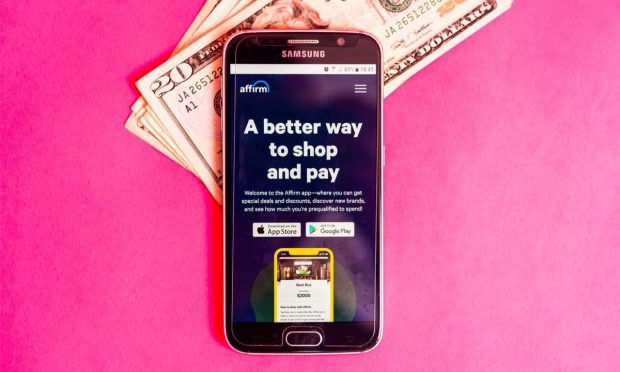Affirm Earnings Update Heats Up Talk of BNPL Pure Plays Versus Encroaching Banks

If you thought buy now, pay later (BNPL) headlines were hot during the pandemic, buckle up as the installments space begins a wild post-COVID ride pitting banks against the pure plays.
The latest to make a splash is Affirm, having announced Monday (Mar. 14) that it is adjusting fiscal Q3 2022 earnings released in February upward from a previously calculated high of $335 million in revenue to “at least $335 million” for the quarter, and “at least” $1.3 billion for fiscal year 2022.
Appearing on CNBC’s Squawk Box the same day, Affirm co-founder and CEO Max Levchin said, “We are seeing exactly the repayment and the delinquency defaults, all metrics that we track very, very carefully, perform to our models as predicted.”
Levchin told CNBC that “the reason we’re able to raise guidance a little bit is … not only has Affirm done great, but the demand for our service is going up because consumers are trying to ration their money a little bit more carefully [and] trying to smooth out their cash flow.”
See also: Investors, Merchants and Consumers Have Drastically Different Views of Affirm
Take It to the Bank
Affirm’s odyssey is among the most high-profile right now as competing forces push and pull at the growing BNPL sector. Regulators are concerned about consumers getting in over their heads with installment credit, while players like banks see a new greenfield opportunity.
As Levchin said, growing demand is a factor in Affirm’s decision to raise its earnings outlook. The question being asked more and more is who will fulfill that demand: banks or FinTechs?
In the study “Banking On Buy Now, Pay Later: Installment Payments And FIs’ Untapped Opportunity,” a PYMNTS and Amount collaboration, we found that 20% of U.S. consumers used BNPL in the last year, and 52% are interested in 2022 — especially if offered by their bank.
Get the study: Banking On Buy Now, Pay Later: Installment Payments And FIs’ Untapped Opportunity
Per that study, “70% of consumers who currently use BNPL are interested in payment plan options from banks over those FinTechs offer. Interest in using bank-backed BNPL is high not only among those who already use such plans but also among those who do not currently use them, with 36% of the latter citing their interest. Just 7% of consumers who use BNPL say they are less interested in a product from a bank compared to one another FI offers.”
Leveraging the trust consumers have for their primary bank or financial institution (FI) and the lending expertise of traditional institutions can put consumers at ease with the concept.
In PYMNTS TV On the Agenda panel in December, Chiro Aikat, Mastercard executive vice president of product and engineering, North America, cited Mastercard data that 83% of U.S. consumers want more BNPL options.
As Aikat said, “A big portion of them like the experience of buy now, pay later — they like how it works, they like the ease of it, but they would love more of their traditional institutions where they bank or have a relationship with to offer the same.”
“Most of the [BNPL] growth is coming from heavy debit users, and banks own those accounts,” Aikat said.
A New BNPL Landscape
It’s happening, and some well-defined use cases show how easily banks can move on BNPL.
During a PYMNTS TV panel discussion in February, WestCap managing director Kapil Mokhat said that banks getting into BNPL “might be akin to what we’ve seen in peer-to-peer (P2P) payments: Venmo came into the market as a pure-play and took it by storm, then banks launched Zelle about five years ago. Their pieces of the market have grown exponentially since then, and the pure-play and the bank-plays are both doing just fine.”
Related: Banks Moving Off the Sidelines to Snag Piece of Growing Buy Now, Pay Later Market
According to a January analysis by Bloomberg, BNPL growth “could accelerate to 46% annually through 2024, but less may accrue to pure-plays Affirm, AfterPay and Klarna as traditional card issuers and processors add BNPL functionality to cards at the point of sale in 2022.”
Banks are not blind to the lower credit card usage tied to BNPL’s rise, or the higher consumer engagement levels FinTech pure plays enjoy — as does PayPal with its Pay In 4 installment option.
Nor are pure plays unaware of bank and card issuer designs on their turf.
Square’s 2021 acquisition of Afterpay is seen by some as a BNPL FinTech anticipating a rush of established lenders into the space by becoming banks themselves, in effect.
As Quartz reported in 2021, “Square has been turning — surely and not that slowly — into a bank, a transition that will be accelerated by its new, $29 billion acquisition of Afterpay,” adding that, “Vendors who use Square’s card readers will now be able to offer Afterpay’s pay-later option to their customers. That will, in turn, encourage more customers to sign up for Cash App, Square’s personal digital-payment app, through which they can pay off their installments.”
Read more: Banks Can Win at Buy Now, Pay Later If They Play to Their Strengths
